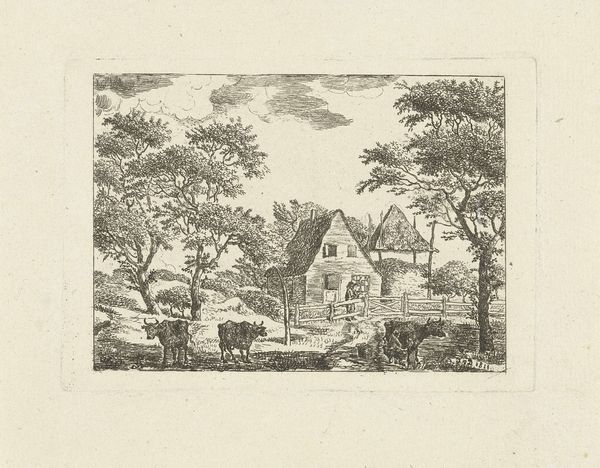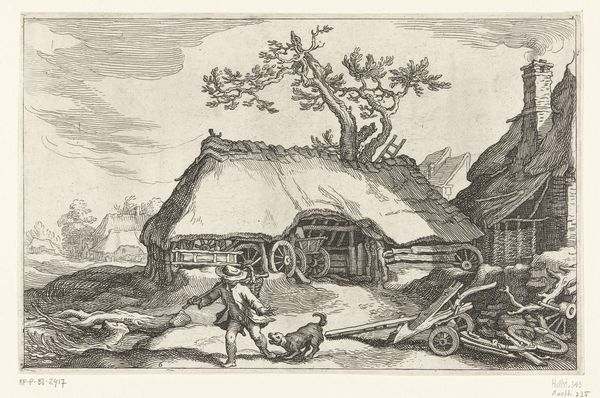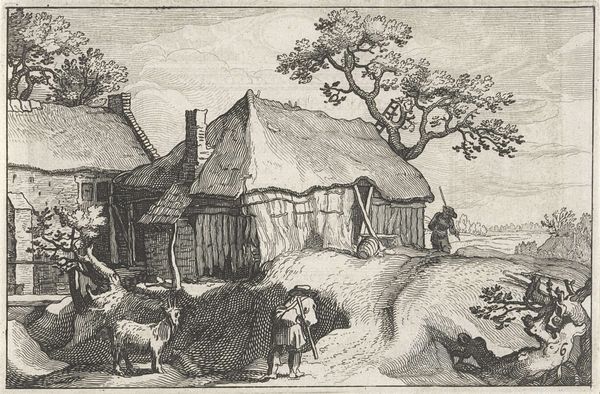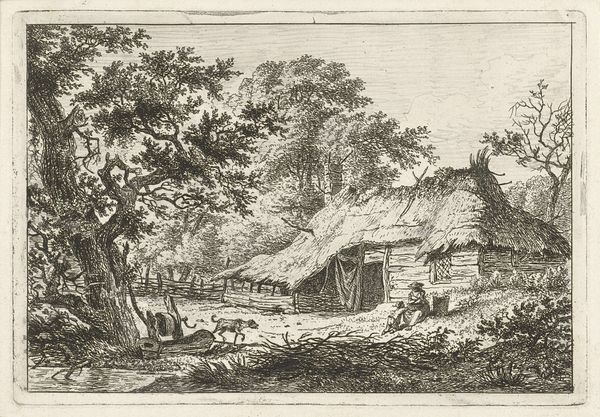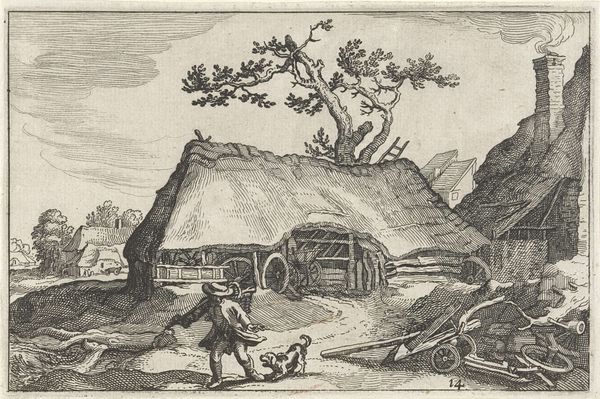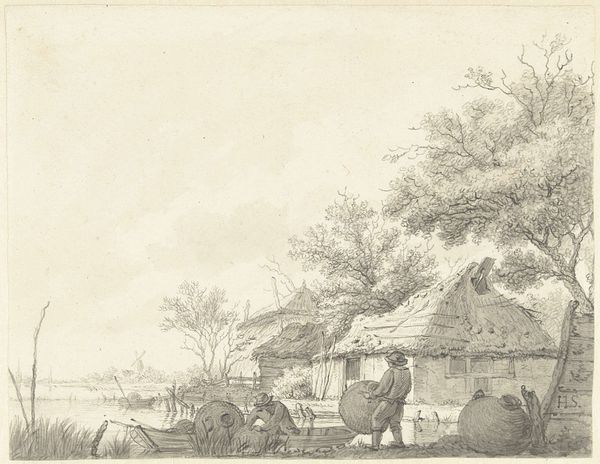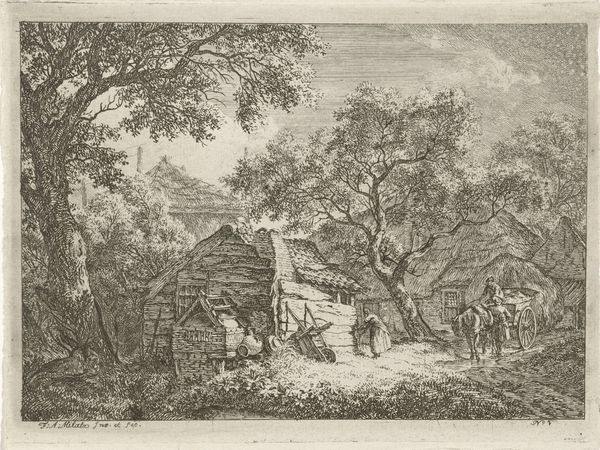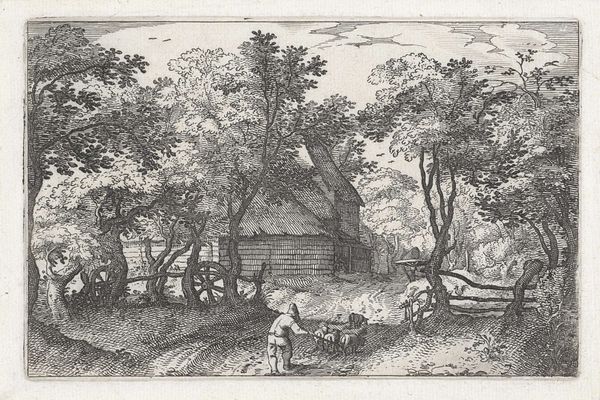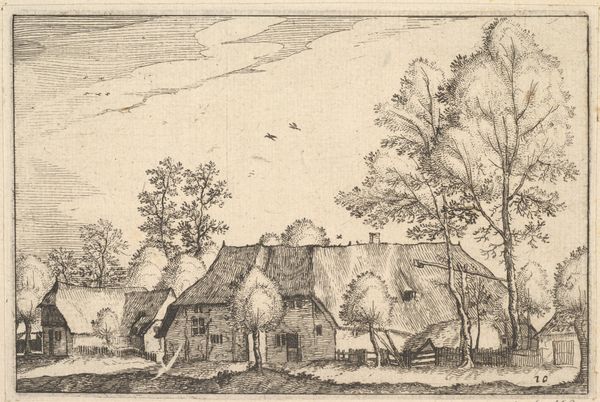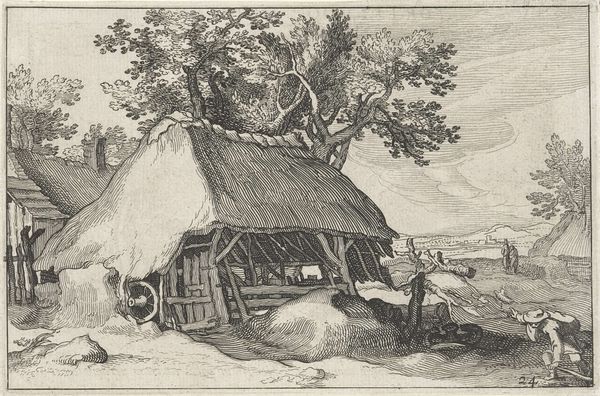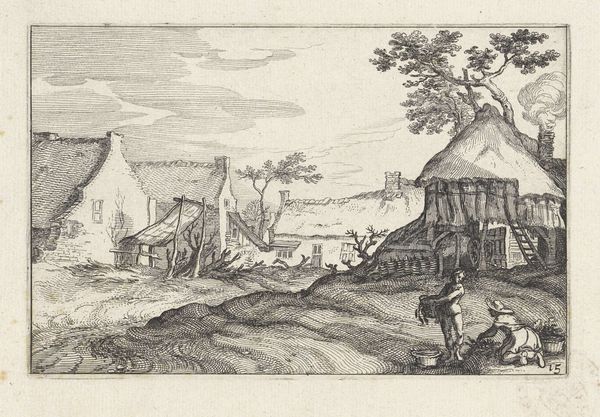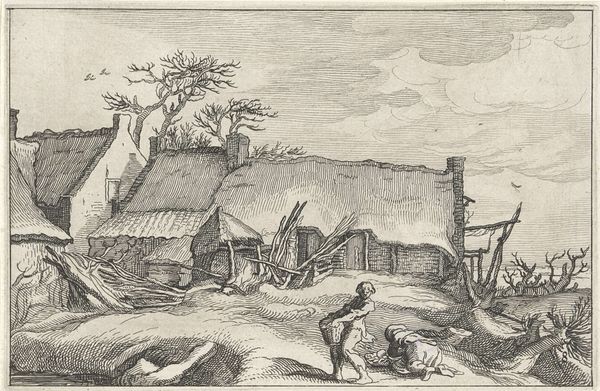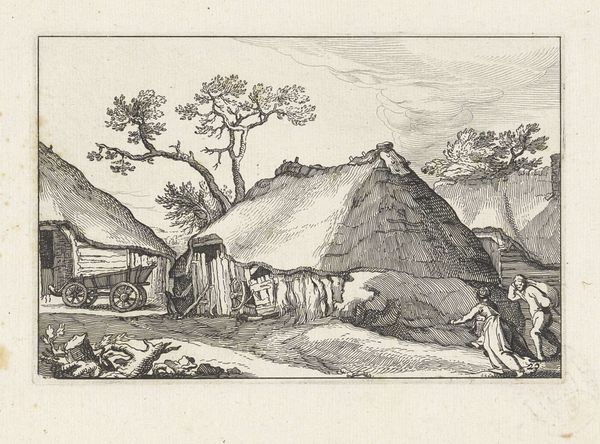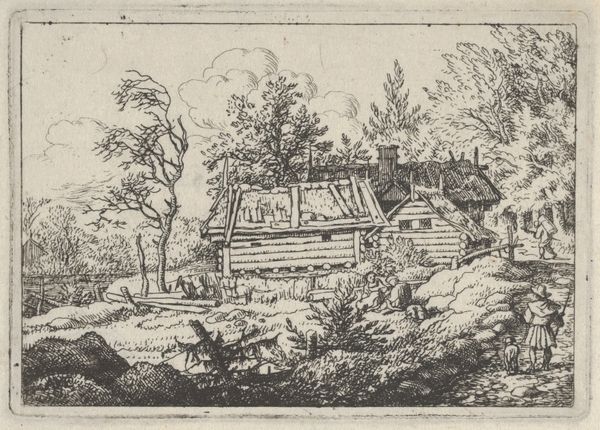
drawing, paper, ink
#
drawing
#
dutch-golden-age
#
mechanical pen drawing
#
pen illustration
#
pen sketch
#
landscape
#
paper
#
personal sketchbook
#
ink
#
sketchwork
#
pen-ink sketch
#
pen work
#
sketchbook drawing
#
genre-painting
#
storyboard and sketchbook work
#
sketchbook art
#
realism
Dimensions: height 142 mm, width 227 mm
Copyright: Rijks Museum: Open Domain
Editor: Here we have "Seated Shepherd with Cattle in front of a Dilapidated Barn," created sometime between 1746 and 1811 by Vincent Jansz. van der Vinne. It's a pen and ink drawing on paper that I find very serene despite depicting decay. What sort of visual cues resonate with you in this piece? Curator: Well, the ruin is central, isn't it? Consider the dilapidated barn – its visual prominence serves as more than just a backdrop. It evokes a potent vanitas motif – a meditation on transience and mortality, themes highly prevalent in Dutch Golden Age art and culture. What do you think of how the sheep almost seem to melt together? Editor: I noticed that too! They almost create this shapeless mass right in front of the barn. So the crumbling structure isn’t just a background element. But what does the shepherd add? Curator: The shepherd, positioned centrally yet blending into the earthy tones, embodies resilience. Notice his passive engagement. The vulnerability of the animals, coupled with the state of disrepair, underscores a delicate balance: life persists even amidst decay, nurturing is constant. Isn’t the presence of both old, gnarled trees and saplings thought-provoking? Editor: Absolutely, that balance you mentioned makes sense. It seems like everything is placed very intentionally, doesn't it? It definitely prompts thoughts on time and nature's cyclical character. Curator: Exactly. It suggests a deeper dialogue between permanence and impermanence, reflecting broader societal concerns about time, faith, and legacy. Are there elements that evoke similar notions today, do you think? Editor: That’s something I’ll be pondering for a while, actually. I had initially looked at this as just a simple landscape drawing, but it has such hidden depth. Curator: Indeed, art often presents itself as a reflection, holding up a mirror to reveal cultural memory and shared human experiences.
Comments
No comments
Be the first to comment and join the conversation on the ultimate creative platform.
